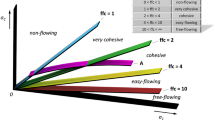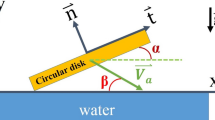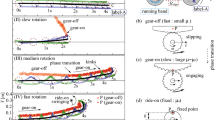Abstract
I NOTICED, while experimenting with a vibrating Chladni plate, that striations had made their appearance on some sand which had inadvertently been spilled on the bench below. The plate, at the time, was supported horizontally on some rubber studs which left an air space of only a few millimetres between it and the bench. That the striations were not caused by vibrations of the latter was easily proved by supporting the plate independently from above, and then producing the striations on a second stationary plate, or drawing board, which rested on a ‘Sorbo’ mat.
This is a preview of subscription content, access via your institution
Access options
Subscribe to this journal
Receive 51 print issues and online access
$199.00 per year
only $3.90 per issue
Buy this article
- Purchase on Springer Link
- Instant access to full article PDF
Prices may be subject to local taxes which are calculated during checkout
Similar content being viewed by others
References
Andrade, Phil. Trans., 230, 413 (1932).
Bagnold, “The Physics of Blown Sands and Desert Dunes” (1941).
Author information
Authors and Affiliations
Rights and permissions
About this article
Cite this article
WALLER, M. New Method of Forming Powder Striations. Nature 166, 961–962 (1950). https://doi.org/10.1038/166961b0
Issue Date:
DOI: https://doi.org/10.1038/166961b0
This article is cited by
-
Powder Ridges in a Sound Field
Nature (1954)
Comments
By submitting a comment you agree to abide by our Terms and Community Guidelines. If you find something abusive or that does not comply with our terms or guidelines please flag it as inappropriate.



